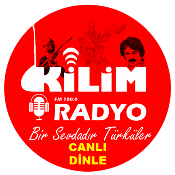Signs of Drug Abuse and Alcohol Abuse Symptoms of Addiction
When people snort cocaine for a long time, the nose can collapse. Holes can form in the roof of the mouth, and other parts of the face can become damaged. Approximately 5 percent of people who snort the drug will eventually develop a hole in their nasal septum, the wall of tissue that divides the two sides of the nose. It makes blood vessels in the nose constrict, cutting off oxygen flow to the nasal tissues. Other chemicals that dealers add to cocaine can also irritate the lining of the nose. Inhaling cocaine can lead to infections of the nasal and oral cavities.
There are both physical and behavioral clues that someone might be experiencing a problem with substance use. None of them is definitive, and there may be many other causes, but https://ecosoberhouse.com/ the presence of multiple signs merits special consideration. On the physical side, a sustained neglect of personal appearance, poor hygiene, and listlessness may be signs.
What are the signs of diabetes in cats?
In fact, sometimes the word addiction is reserved for the most severe cases. Paranoid thoughts can happen in people who struggle with substance use disorders. Individuals who misuse drugs may mistrust the people around them, become highly suspicious of family and friends or ascribe unrealistic motives to other people’s actions. During addiction treatment, paranoid delusions can be addressed through counseling options like cognitive behavioral therapy.
Sometimes, though, blood glucose levels rise higher than they should. The glucose stays in the blood and the cells don’t get the energy they need. FDA has approved two new drugs to treat diabetes mellitus (high blood sugar) in cats. June 27th is PTSD Awareness Day (and all of June is PTSD Awareness Month).
What Is Opioid Use Disorder?
Physical addiction appears to occur when repeated use of a drug changes the way your brain feels pleasure. The addicting drug causes physical changes to some nerve cells (neurons) in your brain. Neurons use chemicals called neurotransmitters to communicate.
- Also, spend some time together doing something you both enjoy.
- You can minimize the risk of developing opioid use disorder by taking medications exactly as prescribed.
- Two examples are carbon monoxide poisoning and mushroom poisoning.
- Research demonstrates, for example, that poverty is a strong contributor to drug use, because it imposes many barriers to resources and impediments to achieving individual goals.
The high from snorting the drug disappears after an hour or so — and the rush from a hit of crack cocaine fades in five to 10 minutes. The information contained on this website is not intended to be a substitute for, or to be relied upon as, medical advice, diagnosis, or treatment. Always seek the advice of your physician or other qualified health provider with any questions you may have regarding a medical condition. Treatment for drug addiction may involve psychotherapy, medication, hospitalization, support groups, or a combination. Someone with a drug addiction uses drugs in a way that affects many parts of their life and causes major disruptions.
Seek Help
Before selecting an addiction rehabilitation center, be sure it provides services for your loved one’s substance abuse problem. Barbiturates and benzodiazepines are depressant drugs often used to manage anxiety or insomnia, or mental disorders such as post-traumatic stress disorder and obsessive-compulsive disorder. They often have several steps that vary from person to person. These steps can include detoxification, behavioral counseling, and long-term follow-up. Recognizing an addiction problem in someone you know can be harder than it seems. The American Society of Addiction Medicine (ASAM) defines addiction as a chronic disease that affects the brain’s reward, motivation, and memory functions.
- Barbiturates and benzodiazepines are depressant drugs often used to manage anxiety or insomnia, or mental disorders such as post-traumatic stress disorder and obsessive-compulsive disorder.
- Teeth clenching, muscle cramping, nausea, chills and sweating.
- Addiction and the intense need for a drug may cause someone who is normally very docile to become agitated and aggressive.
- Other chemicals that dealers add to cocaine can also irritate the lining of the nose.
- The signs and symptoms of cocaine use can vary depending on whether a person snorts, injects, smokes or swallows the drug.
- It should not be used in place of the advice of your physician or other qualified healthcare providers.
Behaviorally, significant changes in activity patterns, social groups, and school or work performance could result from problems with drug use, as can an increased desire for privacy. Behavior in general can become unpredictable, and people may frequently call in sick to work or school. Drug use can push people to borrow or steal money or other valuable items, and to neglect ongoing financial obligations.
Find Addiction Treatment Near You
You might take more than the regular dose of pills or use someone else’s prescription. You may misuse drugs to feel good, ease stress, or avoid reality. But usually, you’re able to change your unhealthy habits or stop using altogether. You can also get addicted to prescription signs of drug use or illegally obtained narcotic pain medications, or opioids. In 2018, opioids played a role in two-thirds of all drug overdose deaths. Many drug users have made many promises to themselves to stop—and broken them as well, leading them to believe they are incapable of stopping.
Cravings, or deep desire for a substance, arise from alterations in reactivity patterns of nerves in the brain’s reward center. Addiction involves both the mind and the body—and every other facet of existence, because they all interact. There is no real distinction between physical addiction and psychological addiction. Substances of abuse affect the reward system of the brain, mediated by the neurotransmitter dopamine. The physical changes to the pleasure-experiencing centers of the brain induce physical changes to the prefrontal cortex, weakening the capacity for decision-making and impulse control.


































